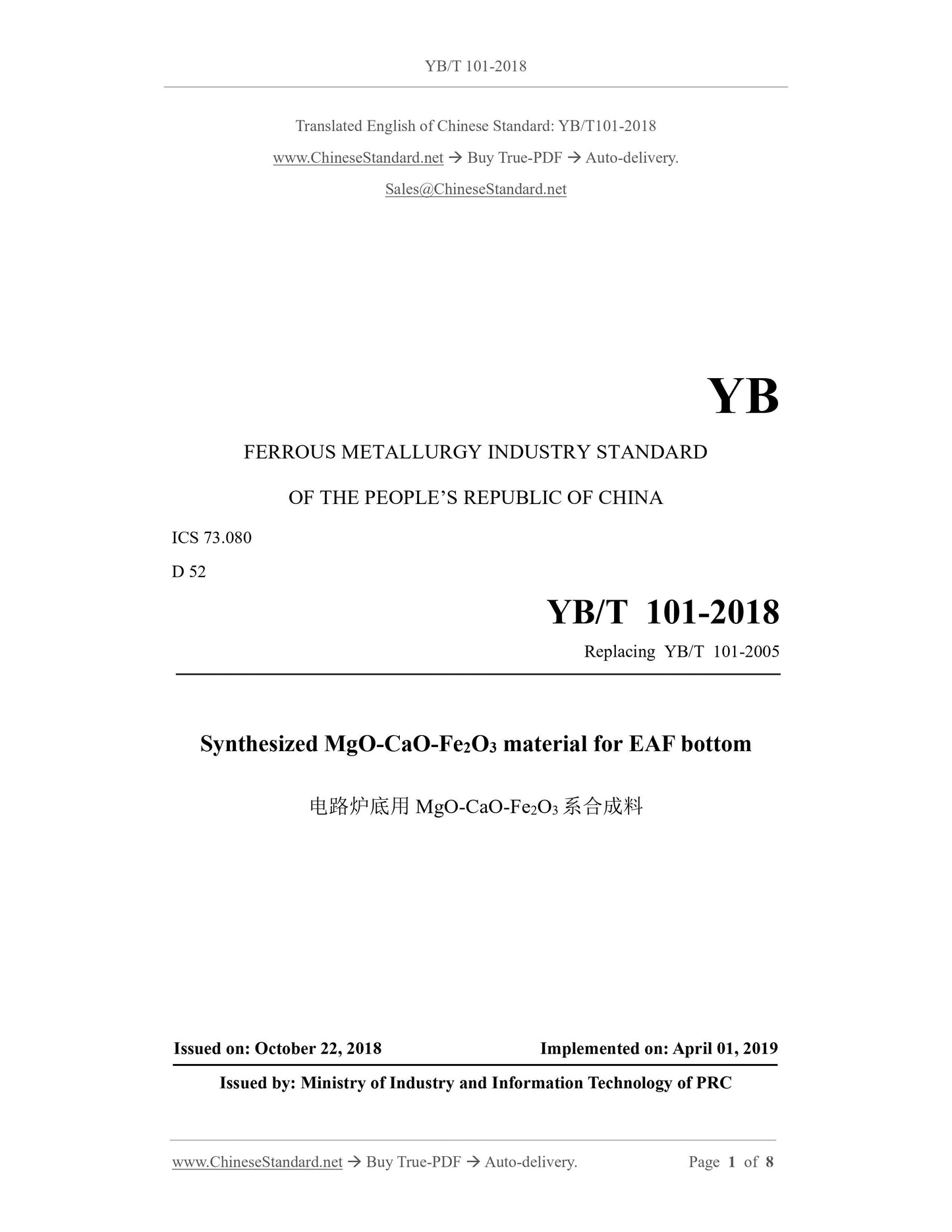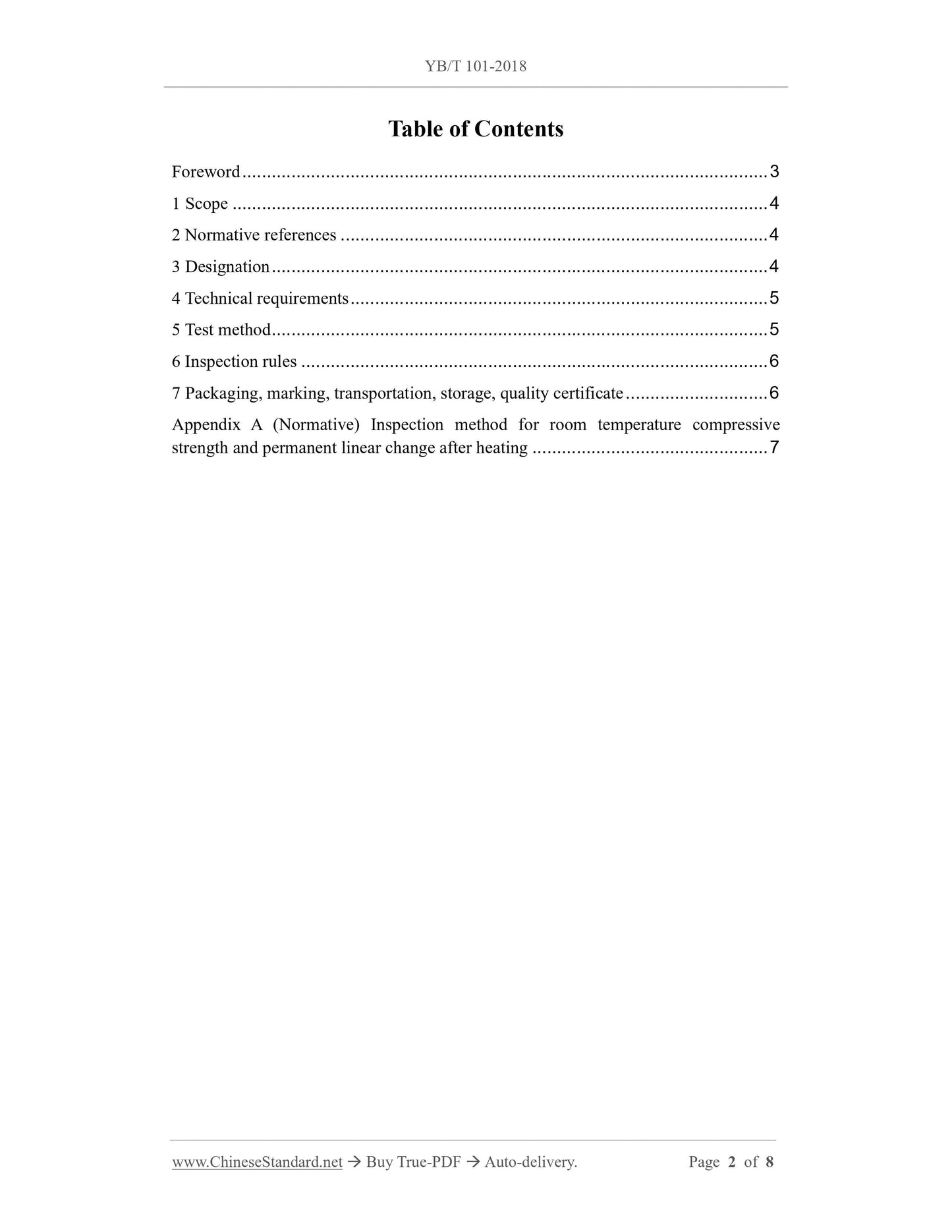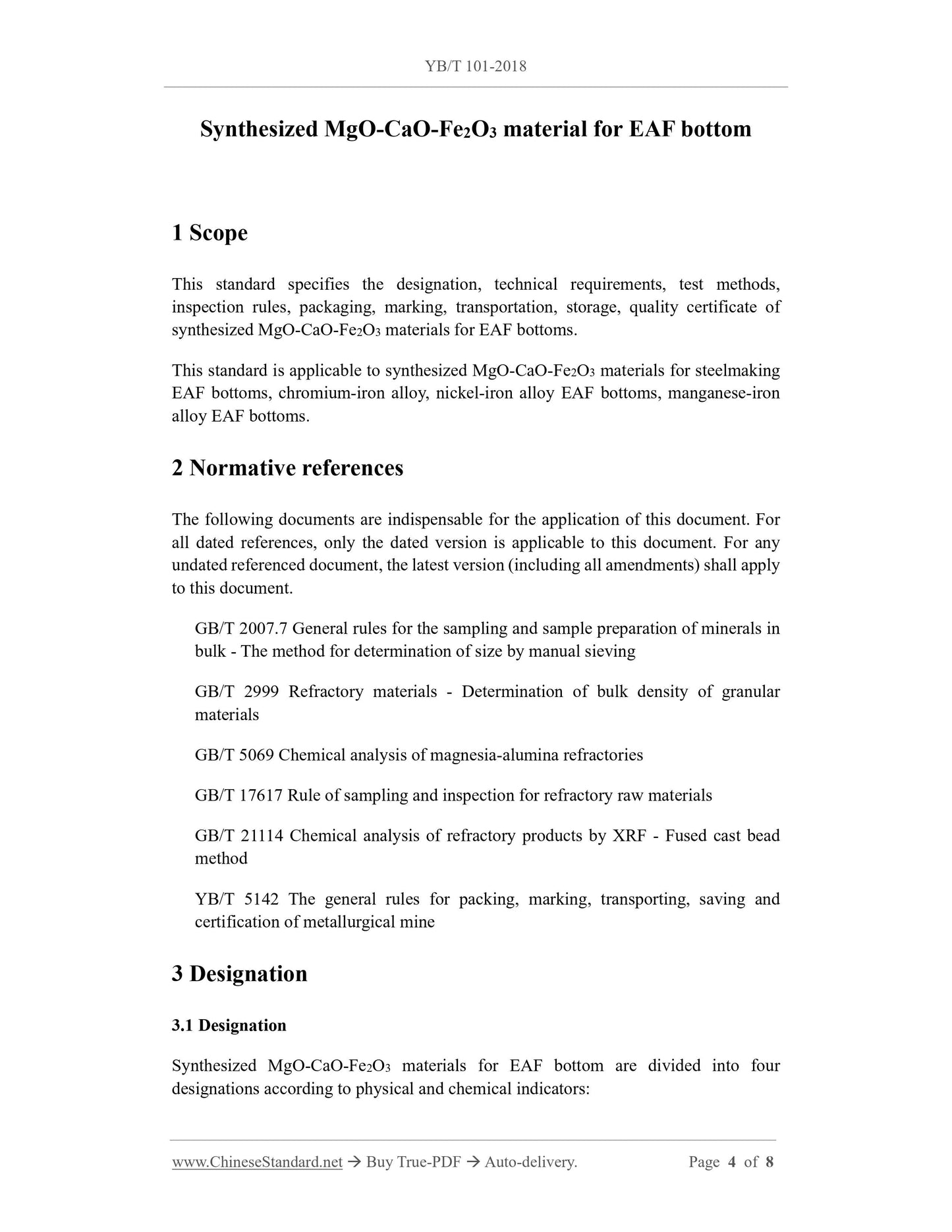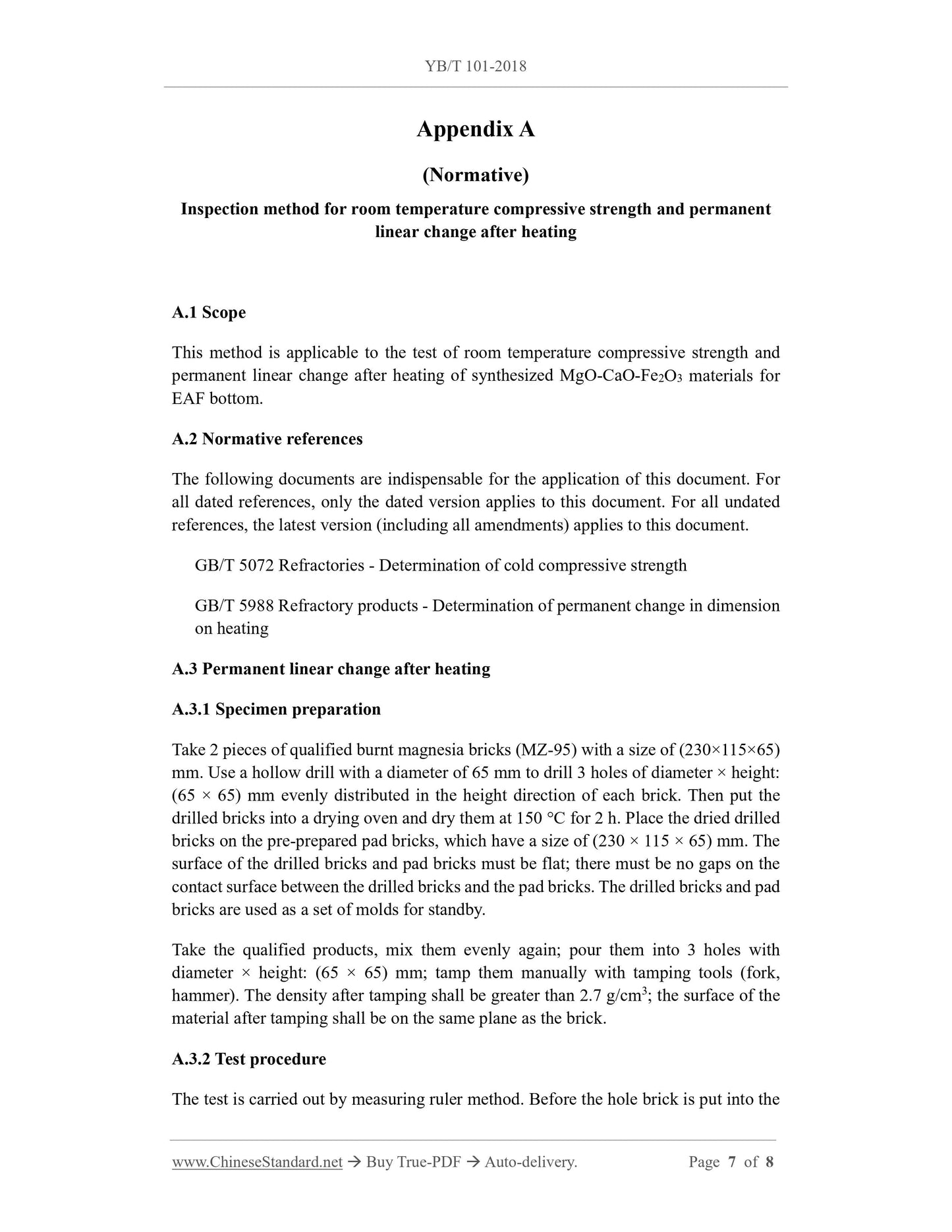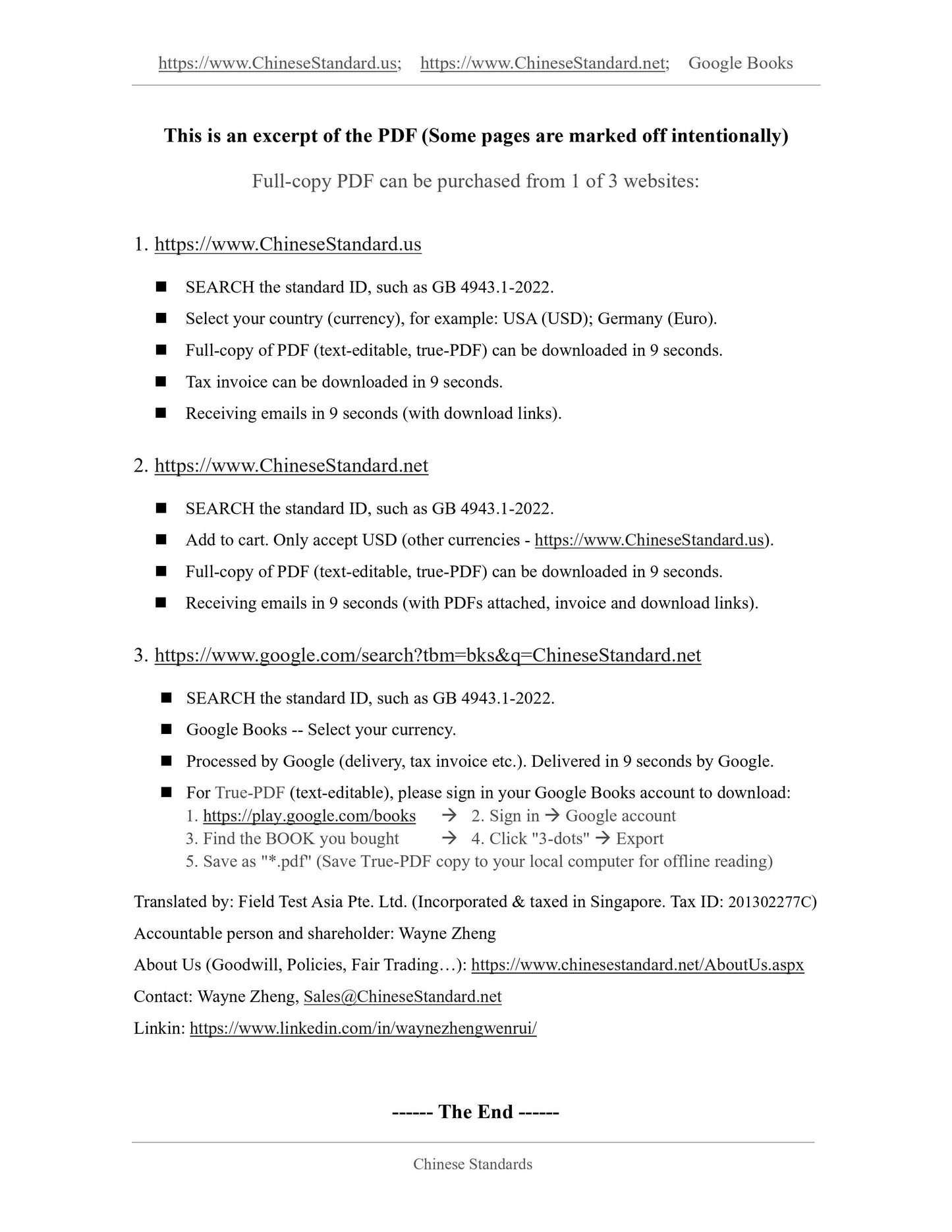1
/
of
5
www.ChineseStandard.us -- Field Test Asia Pte. Ltd.
YB/T 101-2018 English PDF (YB/T101-2018)
YB/T 101-2018 English PDF (YB/T101-2018)
Regular price
$90.00
Regular price
Sale price
$90.00
Unit price
/
per
Shipping calculated at checkout.
Couldn't load pickup availability
YB/T 101-2018: Synthesized MgO-CaO-Fe2O3 material for EAF bottom
Delivery: 9 seconds. Download (and Email) true-PDF + Invoice.Get Quotation: Click YB/T 101-2018 (Self-service in 1-minute)
Newer / historical versions: YB/T 101-2018
Preview True-PDF
Scope
This standard specifies the designation, technical requirements, test methods,inspection rules, packaging, marking, transportation, storage, quality certificate of
synthesized MgO-CaO-Fe2O3 materials for EAF bottoms.
This standard is applicable to synthesized MgO-CaO-Fe2O3 materials for steelmaking
EAF bottoms, chromium-iron alloy, nickel-iron alloy EAF bottoms, manganese-iron
alloy EAF bottoms.
Basic Data
| Standard ID | YB/T 101-2018 (YB/T101-2018) |
| Description (Translated English) | Synthesized MgO-CaO-Fe2O3 material for EAF bottom |
| Sector / Industry | Ferrous Metallurgy Industry Standard (Recommended) |
| Classification of Chinese Standard | D52 |
| Classification of International Standard | 73.080 |
| Word Count Estimation | 5,552 |
| Date of Issue | 2018-10-22 |
| Date of Implementation | 2019-04-01 |
| Older Standard (superseded by this standard) | YB/T 101-2005 |
| Regulation (derived from) | Ministry of Industry and Information Technology Announcement No.54 of 2018 |
| Issuing agency(ies) | Ministry of Industry and Information Technology |
| Summary | This standard specifies the grade, technical requirements, test methods, inspection rules, packaging, marking, transportation, storage and quality certificates of MgO-CaO-Fe2O3 synthetic materials for electric furnace bottom. This standard applies to steelmaking electric furnace bottom, ferrochrome alloy, nickel-iron alloy electric furnace bottom and manganese-iron alloy electric furnace bottom with MgO-CaO-Fe2O3 composite material. |
Share
